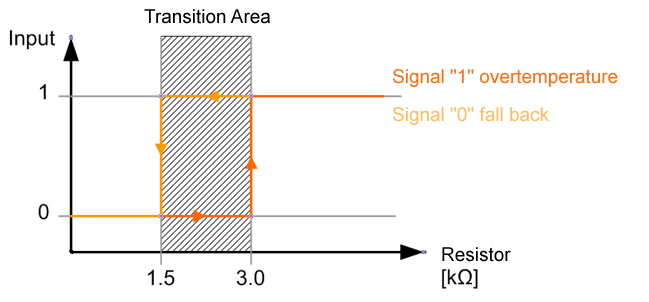Basic principles and switching characteristics
|
Table of contents |
|---|
Basic principles
The EL1382 analyses the input signal from PTC thermistor sensors (temperature-dependent resistance sensors).
Due to the reproducible change in their resistance value, PTC sensors are mostly used for thermal machine protection and serve the direct monitoring of motors, bearings and plants. The resistance value increases very steeply in the region of the nominal response temperature Tref - this region is used by the EL1382 for the switching function. The PTC thermistors are available with nominal response temperatures ranging from 60 °C to 180 °C - the resistance characteristic is defined in DIN 44081 (single sensors) and DIN44082 (triple sensors).

Switching characteristics
The EL1382 indicates the state of the sensor in the process image via 2 bits (input and error).

|
Meaning |
Short circuit |
Normal temperature |
Overtemperature |
Wire breakage |
|---|---|---|---|---|
|
Resistance R |
< 25 Ω |
25 Ω < R < 3 kΩ 25 Ω < R < 1.5 kΩ (fall back) |
> 3 kΩ < 1.5 kΩ (fall back) |
> 8 kΩ |
|
Input bit |
0 |
0 |
1 |
1 |
|
Error bit |
1 |
0 |
0 |
1 |